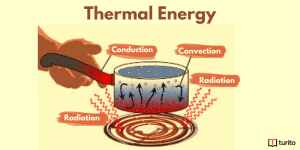Hydrosphere, According to research, approximately 71% of the planet is covered in water. It can be found in oceans, streams, lakes, and rivers. It is also stored as groundwater. Also, part of the quantity is encased in ice. It also occurs in the atmosphere as water vapour. So all the water that exists on Earth is called the hydrosphere. So it’s an element of Earth’s water.
It is defined as the total amount of water on the Earth. This includes water on the planet’s surface, underground, and air. Also, this part of the Earth is made up of liquid, vapour, and ice.
What is Hydrosphere?
It is the part of the Earth made up of all the liquid water we find. It includes bodies of water such as oceans, oceans, lakes, ponds, rivers and streams. In other words, the oceans cover only about 71% of the Earth’s surface, so the hydrosphere is very large. The movement of the hydrosphere and water exchange between the hydrosphere and the cryosphere is the foundation of the water cycle.
In addition, continual water flow and exchange help transport hot water from the poles to the tropics, forming currents that regulate the Earth’s temperature. It turns out that water exchange is an integral element of the hydrosphere. Most notably, the hydrosphere is mostly water.
Furthermore, some impurities and additives contain dissolved minerals, gases and particles. Some are considered pollution, while others are important to ecosystem health. For example, too much sedimentation is hazardous to the environment and ecosystem.
At the same time, insufficient dissolved oxygen levels in the water can lead to circumstances of hypoxia, which may constitute a risk to the ecosystem. Therefore, a healthy ecosystem surrounding the numerous hydrosphere components requires a delicate balance.
Moreover, the hydrosphere is in constant motion. You can see the movement of rivers and streams, but not much of the movement of ponds and lakes. We also see sea and ocean movements involving large-scale water movement over long distances, such as polar, tropical, and intercontinental.
These types of movements are in the shape of streams. It moves warm water from the tropics to the poles and cold water from the poles to the tropics. These currents exist at the surface and at depth. Importance of the hydrosphere
As we take the hydrosphere for granted, little is thought about the role of the planets in sustaining our life. The main importance of the hydrosphere is that water supports various forms of life. In addition, they play an essential role in ecosystems and regulate the atmosphere.
The hydrosphere includes all water present on the Earth’s surface. It consists of salt water, fresh water, frozen water, groundwater, and water in the lower atmospheric layers. Now let’s take a look at its features.
Water’s Importance in Cells
Each cell in an organism is composed of approximately 75% water, which allows the cell to operate correctly. Without water, cells cannot function properly because life cannot exist without water.
Humans require water
People use water in different manners. The most apparent usage is for drinking, but we also use it for domestic reasons, like washing and cleaning and in industries. In addition, we also use water to generate electricity through hydroelectricity.
Water provides habitat
The hydrosphere provides a habitat for many flora and fauna. Many gases such as CO2, O2, chemicals like nitrite (NO-2), ammonium, and water dissolve additional ions. These chemicals’ presence is important for aquatic organisms.
Climate controls
The specific heat capacity of water is its characteristic. This means that the water takes a long time to heat up and a long time to cool down. It helps regulate temperatures on Earth when they are within an acceptable range for there to be life on Earth.
Hydrosphere Examples
Any body of water on Earth that contains liquid water is considered part of the hydrosphere. As a result, the hydrosphere is made up of a wide variety of strata, including:
All the oceans – Pacific, Indian, Atlantic, Arctic and Antarctic oceans.
- Sea: Most of Earth’s water is salt water, most of which is in the sea. Examples – are the Black Sea, Caspian Sea, Persian Gulf, Adriatic Sea, Mediterranean Sea, and the Red Sea.
- Freshwater: Freshwater is much rarer than salt water and is found in many different places.
- Surface water: Surface water sources consist of lakes, rivers and streams.
- Groundwater: Freshwater stored underground makes up a small portion of the freshwater on Earth.
- Glacier Water: Water that glaciers have melted. Human influence on the hydrosphere.
As we know, humans have a huge impact on the environment. The same applies to the hydrosphere. It has changed dramatically due to water pollution, river dams, wetland drainage, climate change and irrigation.
Fertilizer and sewage discharges into water bodies also lead to eutrophication, resulting in the aquatic environment being artificially enriched with nutrients. Excessive algal bloom can cause harmful hypoxia in water.
Acid rain from SOx and NOx emissions from burning fossil fuels causes acidification of hydrosphere constituents, damaging surrounding ecosystems.
Finally, by diverting or damming rivers, our actions also change the hydrosphere’s normal water flow. In other words, it damages the surrounding ecosystems that depend on water sources.
Some Hydrosphere Facts
- The total water on Earth is about 332.5 million cubic miles, or 1,386 million cubic kilometres (km3).
- According to the proportion of water in the hydrosphere, there are the following elements:
- Ocean – 97.6%
- Atmosphere – 0.0009%
- Saline lakes and Inland seas – 0.008%
- Groundwater – 0.5%
- Soil moisture – 0.01%
- Glaciers and Icecaps – 1.9%
- Freshwater rivers – 0.0001%
- Lakes – 0.009%
- The Earth is characterised as a water planet because life on Earth depends on the water in the hydrosphere.
- Permanent snow contains approximately 68.7% of all freshwater. This may be found in the Arctic and Antarctic areas and on mountain glaciers.
- The hydrologic cycle is the primary way the hydrosphere interacts with the atmosphere and the lithosphere.
- The hydrologic cycle is propelled by solar energy. The water cycle consists of four major steps: evaporation, condensation, precipitation, and an extra stage known as transpiration.
- Evaporation is how water on the Earth’s surface converts from liquid to vapour (gas).
- When water vapour reaches the sky, it cools and condenses into water droplets, which form clouds. Condensation is the name given to this process.
- The clouds eventually descend to Earth as precipitation, which includes rain, hail, sleet, and snow.
- Runoff is water from precipitation that runs over the Earth’s surface into bodies of water.
- Plants also emit water vapour into the atmosphere via transpiration.
Water that does not run off seeps into the ground, filling the crevices between the soil and rocks. It eventually turns into groundwater.
- According to experts, the amount of water on the Earth’s surface does not vary throughout time. This means that the amount of water accessible on Earth now is the same as when dinosaurs roamed the planet.
- Temperature and pressure are thought to change dramatically with depth in the hydrosphere. Furthermore, the average depth of the Earth’s seas is believed to be 12,447 feet or 3794 metres. This is five times the average height of the continents.
- The Earth’s system is made up of four spheres that are interrelated or overlap: the hydrosphere, lithosphere, atmosphere, and biosphere.
- It is estimated that the entire mass of water on Earth is around 300 times that of the climate.
- Some scientists believe that Jupiter’s moon Europa contains another hydrosphere. This hydrosphere comprises a frozen upper layer and a vast liquid layer beneath it.
- The Pacific Ocean is the world’s deepest ocean. It also contains the Mariana trench, the world’s deepest. The Pacific Ocean is nearly round, but the Atlantic Ocean has an ‘S’ form. The Atlantic Ocean has the world’s longest coastline.
- Only one ocean has a name that is taken from a nation. This is the Indian Ocean, which is deeper than the Atlantic. Additionally, there are more continental islands than volcanic islands in the Indian Ocean.
- The Arctic Ocean is the smallest ocean on the planet. It is located within the Arctic Circle, with the North Pole at the centre.
- The sun’s and Moon’s gravitational force causes saltwater to expand and contract. This causes the surface layer to rise and fall, resulting in tides. Full and New Moon tides are the highest. They are referred to as spring tides. A neap tide is the lowest tide. It happens each month due to the sun’s vertical relationship with the Moon.
- Ocean currents always move from east to west as the Earth rotates from west to west. Stronger currents are present toward the equator when the Coriolis force is close to zero. A counter-equatorial current is produced by the equatorial currents in the Northern and Southern Oceans, which fills the water void. Similarly, countercurrents akin to equatorial currents frequently move downward from polar to equatorial regions.
- The hydrosphere, like the environment, is thought to be in perpetual motion.
Frequently Asked Questions
1. How do people affect the hydrosphere?
Humans have a significant influence on the hydrosphere. Water pollution, river damming, wetland draining, climate change, and irrigation have significantly impacted.
2. Describe one distinction between waves and tides.
Tides are unique turbulent motions of the marine water caused by gravitational forces (centrifugal and centripetal) acting together with the Earth and the Moon, which causes the ocean’s waves to leap up to several metres, resulting in a distinctive phenomenon of strong waves, i.e. tides.
3. What are hydrosphere characteristics?
Hydrosphere characteristics
- It is the layer that surrounds the Earth.
- Its physical condition changes all the time as the water within it circulates.
- The sun is required to modify the condition of the water.
- The salinity of the waters is 35 gr/l.
- The temperature changes with latitude and depth.
- Salinity influences its density.
- Water contains the same gases present in the atmosphere.

Relevant Articles
Understanding Thermal Energy: What It Is and How It Works
Thermal energy is essential to our daily lives, from warming …
Understanding Thermal Energy: What It Is and How It Works Read More »
Read More >>Avogadro’s Number: Meaning, Importance, and More
Introduction The concept of measuring the microscopic particles that make …
Avogadro’s Number: Meaning, Importance, and More Read More »
Read More >>Kinetic Friction – Definition, Laws, Types
Kinetic Friction Kinetic force is a force acting between two …
Kinetic Friction – Definition, Laws, Types Read More »
Read More >>




















Comments: